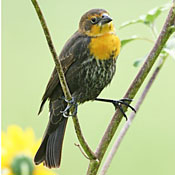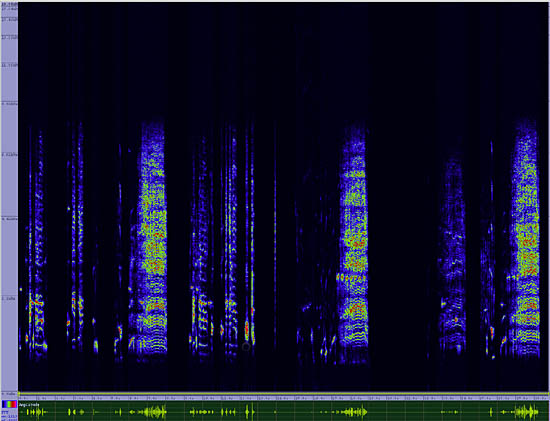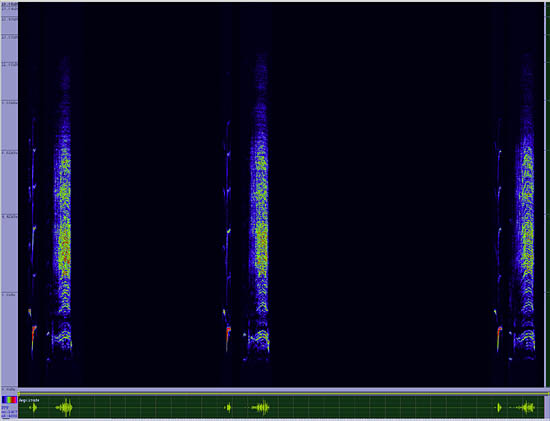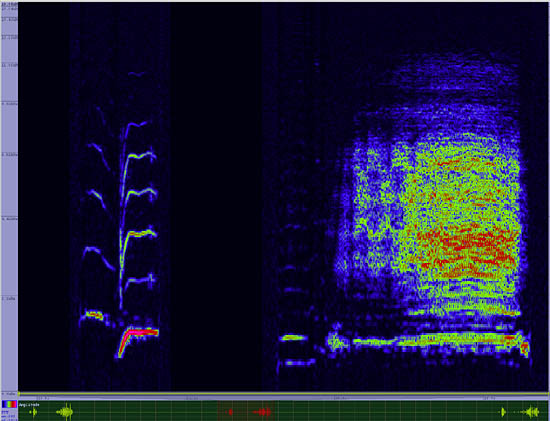Yellow-headed Blackbird
Xanthocephalus xanthocephalus

Perching
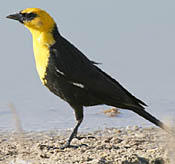
Length: 10 in. (24 cm )
This beautiful species nests in marshes and eats insects and emerging aquatic larvae. The nest is woven from aquatic vegetation and attached to reeds. During the winter it forms huge flocks, often together with Red-winged Blackbirds, grackles and cowbirds. These flocks roost in trees and marshy areas and fly out each morning to agricultural fields and feed lots to eat seeds.
The four-digit banding code is YHBL.
Bibliographic details:
- Article: Yellow-headed Blackbird
- Author(s): Dr. Biology
- Publisher: Arizona State University School of Life Sciences Ask A Biologist
- Site name: ASU - Ask A Biologist
- Date published:
- Date accessed:
- Link: https://askabiologist.asu.edu/activities/bird/yellow-headed-blackbird
APA Style
Dr. Biology. (). Yellow-headed Blackbird. ASU - Ask A Biologist. Retrieved from https://askabiologist.asu.edu/activities/bird/yellow-headed-blackbird
Chicago Manual of Style
Dr. Biology. "Yellow-headed Blackbird". ASU - Ask A Biologist. . https://askabiologist.asu.edu/activities/bird/yellow-headed-blackbird
Dr. Biology. "Yellow-headed Blackbird". ASU - Ask A Biologist. . ASU - Ask A Biologist, Web. https://askabiologist.asu.edu/activities/bird/yellow-headed-blackbird
MLA 2017 Style
Be Part of
Ask A Biologist
By volunteering, or simply sending us feedback on the site. Scientists, teachers, writers, illustrators, and translators are all important to the program. If you are interested in helping with the website we have a Volunteers page to get the process started.

